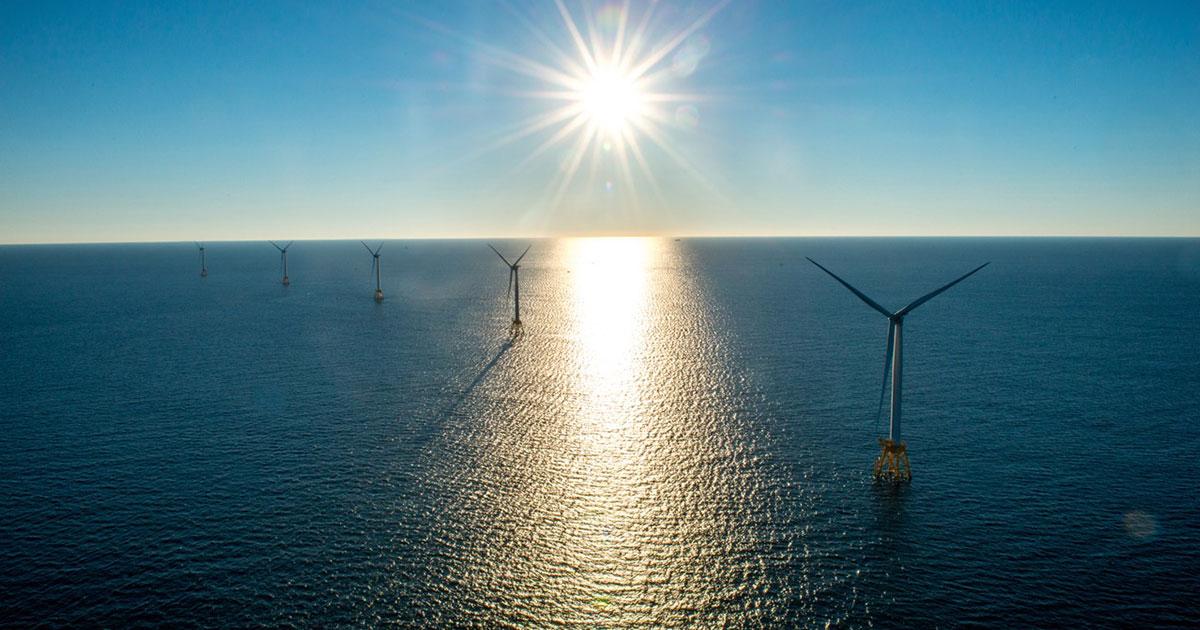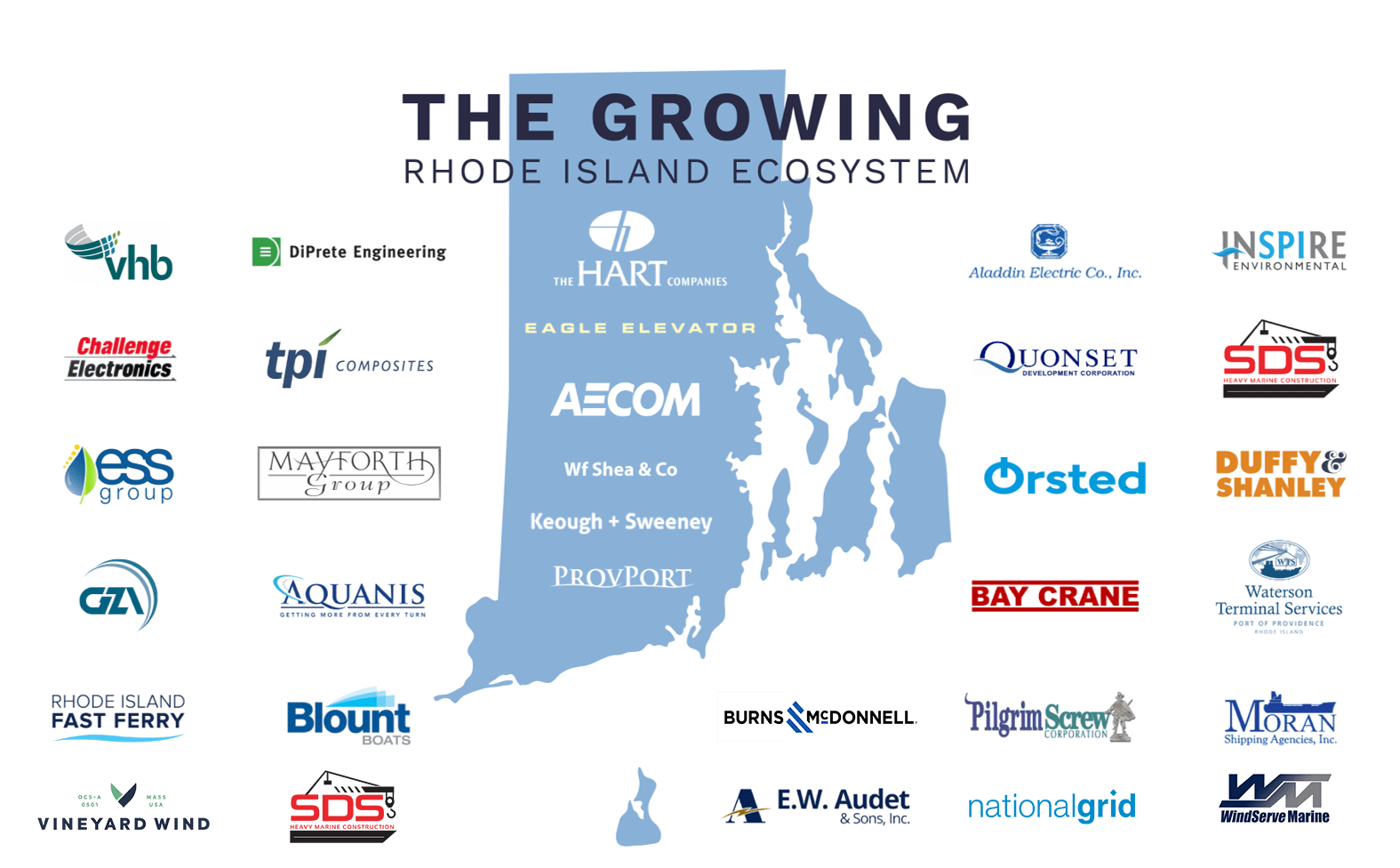Rhode Island Offshore Wind Development Update

ON&T chats with Hilary Fagan, Executive Vice President of Business Development for the Rhode Island Commerce Corporation
By now, most people have heard that Rhode Island is home to the first U.S. offshore wind farm. The capabilities, partnerships, and best practices they have developed should continue to benefit the development of offshore wind in New England and the Mid-Atlantic states for decades to come.
One of the key challenges for offshore wind in the U.S. is the development of a supply chain, a skilled workforce, and industry-specific capabilities. Rhode Island is well-positioned to solve these challenges. For example, the state connect companies through its Supply Rhode Island initiative and its dedicated Offshore Wind Supply Chain Database. It’s no surprise that a place called the Ocean State succeeds at bringing new industries together. Rhode Island has long been home to a wide range of maritime industries, including boat building and servicing; development of advanced materials; ocean sciences and engineering; and the development of unmanned underwater vehicles. For example, it’s easy to imagine how the expertise developed by companies working with the Naval Undersea Warfare Center in Newport, in testing both undersea systems and unmanned vehicles, can translate to of expertise in offshore wind inspection and survey. ON&T chatted with Hilary Fagan of the Rhode Island Commerce Corporation about the next steps for offshore wind in her state.
 ON&T: What is the Rhode Island Commerce Corporation doing to ensure that your state has the technical workforce to remain at the forefront of this industry?
ON&T: What is the Rhode Island Commerce Corporation doing to ensure that your state has the technical workforce to remain at the forefront of this industry?
Fagan: The Rhode Island Department of Labor and Training has provided the resources for us to build and specially train our offshore-wind talent pool. We are also utilizing a number of grants and initiatives—for example, Real Jobs Rhode Island, which offers certificate programs in our high schools. Made possible by an initial $100,000 grant through Real Jobs Rhode Island, the Wind Win RI program offers courses on everything from marine safety to engineering, with the goal of getting students to graduate with an offshore wind energy certificate equivalent to nine college credits. The class of 2020 will be the first to graduate with the energy certification, which will include special licenses, marine safety certification, first aid and more. Then, students can pursue a trade out of high school, or continue on to college for further education in wind energy.
The University of Rhode Island and Community College of Rhode Island are also part of a consortium of education partners helping with the curriculum and course work needed to develop offshore wind talent in Rhode Island.
ON&T: How is Rhode Island partnering with other states to advance our nation’s offshore renewable energy portfolio?
Fagan: The demand from New England states for offshore wind energy is strong and growing, so the entire region will benefit from the growth of this industry. One way we’re interested in coordinating is through our port infrastructure. We want to further explore ways we can collaborate to successfully develop offshore wind opportunities off the New England coastline.
ON&T: In the fall of 2018, Deepwater Wind was acquired by Ørsted. What did this mean for its existing projects (like the Block Island Wind Farm) and future projects in the region?
Fagan: We’re hugely supportive of Deepwater Wind, now Ørsted. What is exciting is that Ørsted is an industry leader, so its acquisition of Deepwater Wind brings additional in-depth and technical knowledge into our state, especially since it named Providence its U.S. co-headquarters. This relationship with Ørsted benefits our supply chain, mostly recently with GEV Wind Power, which recently made Rhode Island the home of its U.S. headquarters, and strengthens our renewable energy supply chain and will enable Rhode Islanders to further access clean energy careers. This is the latest announcement that is putting Rhode Island at the forefront of the U.S. offshore wind industry.
ON&T: In June, General Dynamics’ Electric Boat broke ground on a $792 million expansion of its submarine-building facilities in North Kingstown, Rhode Island. What attracted General Dynamics to North Kingstown, and what is your office doing to bring more maritime construction to your state?
Fagan: We’ve worked very closely with Electric Boat to help it train the talent and develop the workforce it needs in our state. In anticipation of the thousands of jobs it will create here in the next decade, we partnered Electric Boat with six of our career and technical schools, which are now training Rhode Island high school students in advanced welding and shipfitting. The program begins in a student’s freshman year and grows more advanced each year, ultimately leading to paid internships during senior year and to the possibility of a good-paying job at Electric Boat after graduation.
And to ensure that Rhode Islanders of all stages are being trained to fill the Electric Boat jobs, 500-plus people of all ages will also be hired and then trained through the company’s partnership with the Community College of Rhode Island and the New England Institute of Technology. An additional $2 million has been allotted to the new Job-ready Workplace Learning Program, which provides refundable job training tax credits on a competitive basis to support job training.
Our Real Jobs Rhode Island initiative has now trained hundreds of Rhode Islanders to fill maritime manufacturing jobs at Quonset Business Park, which 200 companies call home.

